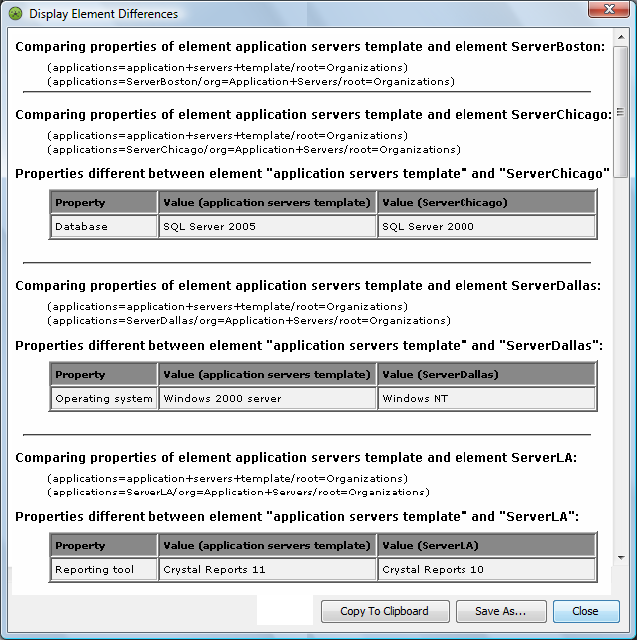6.3 Configuration Standardization
Assume that a specific set of servers in your IT infrastructure support an application that is critical to your business. That application requires the server to have specific software installed on it. If any of the servers do not have that software, you should know so that you can investigate why and address any potential problems before your critical application is negatively impacted. The servers are located in offices around the country.
-
Using Operations Center and other discovery tools, you locate your application servers in your infrastructure and gather information about the servers in Operations Center. You place all the discovered application servers into a service model called Application Servers.
-
You create a behavior model that assigns a specific property page to each of the application servers. That property page has the Database, Operating system, and Reporting tool fields.
-
You create another element called Application Servers Template under Service Models, assign the same property page to it, then add the correct values to each of the properties as follows:
-
Database: SQL Server 2005
-
Operating system: Windows 2000 server
-
Reporting tool: Crystal Reports 11
-
-
To determine if any of the application servers have different properties, you compare them to the application servers template. Right-click Application Servers Template, select Application Servers, and compare it to its children. For specific instructions, see Section 5.2, Creating an Element Comparison.
-
You compare the application servers template to ServerBoston, ServerChicago, ServerDallas, and Server LA and get the following results:
Figure 6-3 Differences Between Elements

No results are shown for ServerBoston, which means that it matches the application servers template and has the correct configuration. Three of the servers have values that are not correct. ServerChicago has SQL Server 2000 instead of SQL Server 2005; ServerDallas has Windows NT for the operating system and not Windows 2000 server; and ServerLA has the old version of Crystal Reports.
You copy this information to the clipboard and save it to a Microsoft Word file that you e‑mail to the IT managers in Chicago, Dallas, and LA. You can also paste the data into other applications or save the data as either an XML or HTML file.